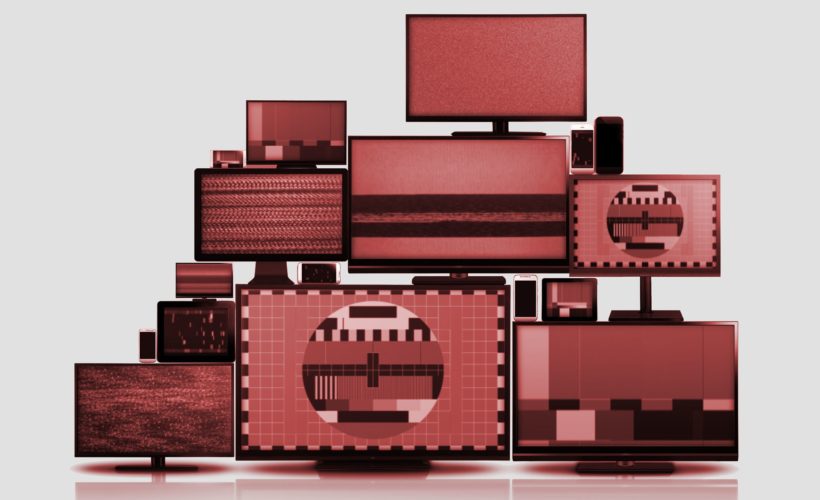You’ve got your Netflix subscription and Amazon Prime. You’ve got HBO Now, at least when Game of Thrones is on, and maybe pay up for a more specialized service too, like Crunchyroll or the WWE Network. It’s already lot! Bad news: It’s about to get worse.
The notion that streaming services might someday totally supplant the monolithic cable package has glittered on the horizon for years now. But as that future becomes increasingly the present, an uncomfortable reality has set in: There’s too much. To Netflix, Amazon Prime, Hulu, and HBO Now, add WarnerMedia, Disney, and Apple as omnibus, general interest streaming destinations. Investors have poured a billion dollars into something called Quibi, which has an unfortunate name but exclusive Guillermo del Toro content. And the niche options continue to proliferate as well, whether it’s DC Universe or College Humor. If we’re not at the breaking point yet, we’re surely about to find it.
“Everybody wants to talk about how much money’s being spent on content. But as a consumer, don’t you already feel like you have enough content choices out there?” says Dan Rayburn, a streaming media analyst with Frost & Sullivan. “Our eyeballs and the time that we have to consume media of any kind is being challenged.”
There’s nothing wrong, of course, with choice. That’s especially true if your interests run more niche, outside the relatively anodyne confines of a cable package, or even the relatively mainstream offerings of Netflix and Amazon. “The abundance of programming and commercial viability of smaller audiences is making it possible for storytelling from a much wider range of experiences to finally be available,” says Amanda Lotz, a professor of media studies at the University of Michigan and author of Portals: A Treatise on Internet-Distributed Television.
But while tailored, a la carte services have long been the promise of streaming TV, it’s starting to look more like a series of pricey buffets. Competing megacorporations are all pumping billions into original content, much of it designed for mass appeal. (Apple has reportedly mandated no “gratuitous sex, profanity or violence” on its incoming streaming service.) And even if each also produces more experimental or idiosyncratic options, you’ll be hard pressed to access all or even most of them. The show that scratches your itch won’t necessarily be on a platform you can afford to pay for.
“Realistically you’re not going to have a consumer with more than two or three services per month,” says Rayburn. Especially when you consider that these streaming services still largely supplement, rather than replace, traditional cable packages. There’s only so much disposable income to go around, no matter how much you care for The Marvelous Mrs. Maisel.
“In a lot of ways it’s an extension of the narrowcasting that began in the 1980s, with cable,” says Jennifer Holt, a media studies professor at the University of California, Santa Barbara. But by advancing that trend, it also exacerbates the fragmentation of culture that came with it. Again, that has plenty of potential benefit, giving otherwise marginalized perspectives more opportunities for representation. But it paradoxically may also make those shows increasingly hard to find.
“There was a time, the ’70s or the ’80s, when you knew what channel your show was on,” says Holt. “That kind of got lost in a lot of ways, with certain streaming services. Now maybe the idea of branding this content will take on different dimensions. You’re going to have to know where to find it. It becomes more work.”
Meanwhile, the splintering of services also threatens to hasten the decay of a broader, shared cultural conversation. “It starts to evacuate the potential for any real communal, cultural touchstone when we’re all watching completely different services,” says Holt.
All else being equal, one might expect all of this to be a blip, a temporary flash of exuberance that will subside once good old fashioned market forces clear away the rabble. But the untimely death of net neutrality, along with a merger-friendly Justice Department, have left all else quite explicitly unequal.
“I think the bigger issue is what happens in the aftermath of net neutrality’s elimination,” says Lotz, who argues that allowing ISPs to enforce paid prioritization is “more likely to change the marketplace for the services in profound ways.”
AT&T owns WarnerMedia, for instance, and so can not only potentially offer its impending streaming service at a discount—or for free—to its mobile or cable customers, but could prioritize its performance on its network, and downgrade that of rivals. (WarnerMedia hasn’t announced pricing yet, but if any of this seems far-fetched, note that AT&T already offers DirecTV Now discounts for mobile customers, and doesn’t count DirecTV Now streaming against data caps.) Comcast, meanwhile owns NBCUniversal, which gives it a sizable stake in Hulu; it also recently acquired Sky, which operates Now TV, a popular streaming service internationally.
The cable-content hybrid companies, in fact, win no matter what. Even if you pass on their streaming service, they can always make up the difference by charging more for broadband.
And then there are the companies for whom a streaming platform is a means to a greater end. Apple isn’t an ISP, but it does want to sell iPhones and iPads and Apple TVs, and will reportedly make at least some aspects of its streaming service free for hardware customers—just as, Holt notes, the early radio programs only existed to help radio companies sell more radios. Likewise, Amazon attempting to drive Prime subscriptions. All of which is to say, the field will stay crowded for longer than you might expect.
There are some bright spots in all of this, especially when you think small. “The services that work very well are the niche services, the ones that are targeting a specific type of user with a specific type of content,” says Rayburn. Those more targeted services have also forged new business models; Rayburn points to CuriosityStream, which recently embraced sponsors to help lower prices for viewers.
And Holt notes that most popular streaming services currently have fairly liberal password-sharing policies; as long as that holds true, she says, piracy could be the tie that binds us.
As more megaservices fill the landscape, though, one wonders how long before the niche upstarts feel the squeeze. And as your streaming options continue to kaleidoscope, what’s coming next looks promising, sure, but also daunting. Especially given who it’s coming from.
“The combination of the digital distributor, whether it’s the mobile phone or the ISP, and the content delivery, to me that’s the bleak future we’re headed toward,” says Holt. “I don’t think it’s going to work out for consumers.”
More Great WIRED Stories
- How the US fought China’s cybertheft—with a Chinese spy
- Robocars could make humans unhealthier than ever
- Turning California’s weed into the champagne of cannabis
- Welcome to Voldemorting, the ultimate SEO dis
- PHOTOS: From Mars, Pennsylvania to the Red Planet
- Get even more of our inside scoops with our weekly Backchannel newsletter
Source:WIRED











